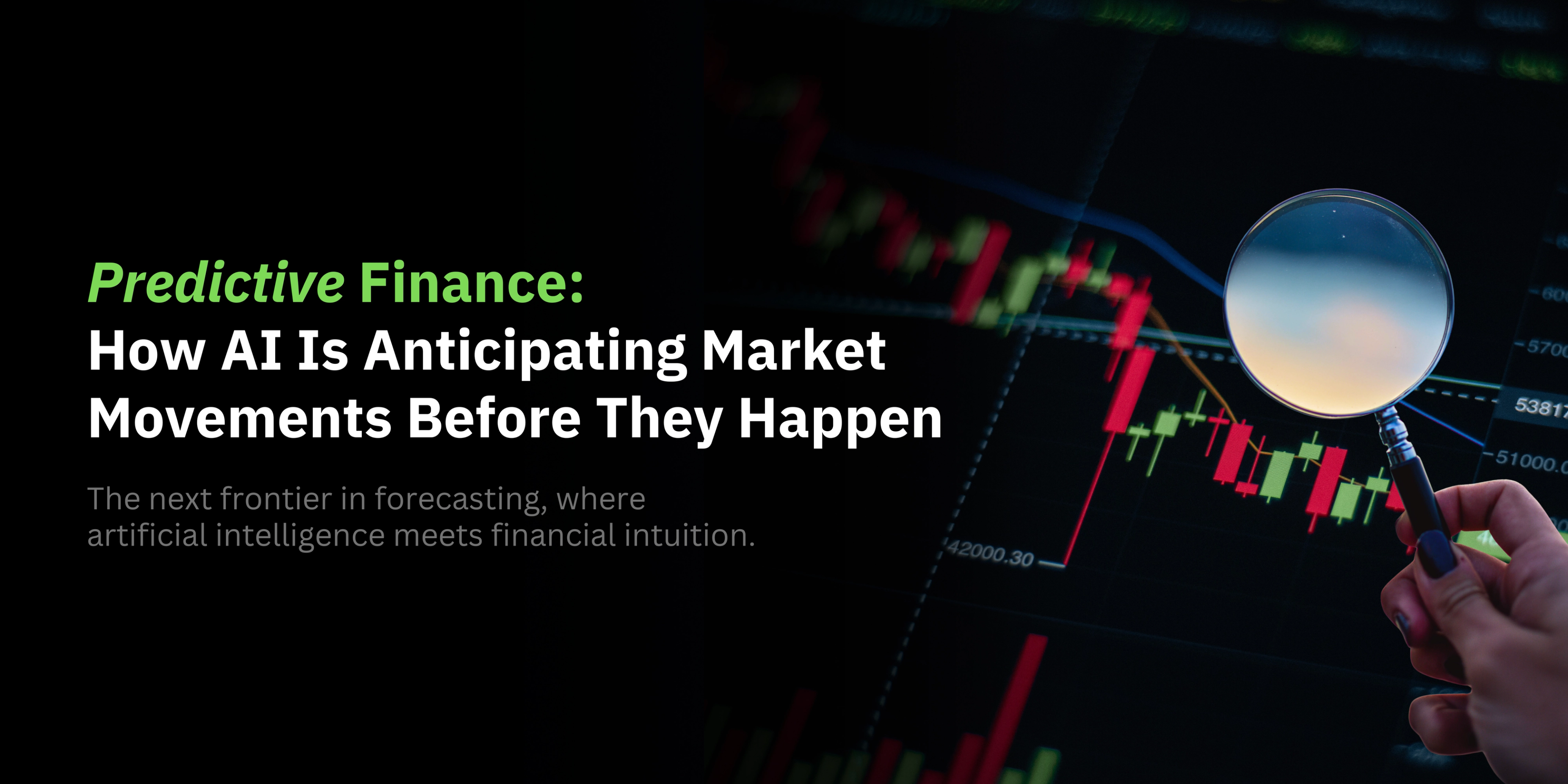In a financial landscape driven by uncertainty, prediction has become both a science and an art. Artificial Intelligence (AI) and machine learning (ML) are redefining how institutions forecast, strategize, and mitigate risk. The rise of predictive finance, a data-powered approach that anticipates outcomes before they unfold, is enabling firms to act, not react. As global competition intensifies, the ability to translate data into foresight is no longer a differentiator, it’s a necessity.
Predictive models, once confined to research labs, now sit at the core of investment banking, corporate finance, and risk management. According to Sigma Technology (2025), predictive analytics has already improved forecast accuracy by up to 30% for institutions integrating AI-driven algorithms into their processes.
The Evolution of Predictive Finance
The evolution of predictive finance is rooted in decades of data analysis, but accelerated exponentially with AI. Traditional financial modeling relied on backward-looking datasets and human interpretation. Today, AI systems combine structured and unstructured data to generate forward-looking insights with precision and speed.
Key enablers include:
- Generative AI models capable of simulating complex market conditions (Bi, Deng & Xiao, 2024).
- Deep learning architectures that analyze billions of transactions to detect anomalies and predict financial health (Liu, 2024).
- Natural language processing (NLP) tools that interpret sentiment from earnings calls, regulatory filings, and social media chatter.
These advancements are not only transforming investment banking workflows but are reshaping how CFOs and portfolio managers think about data and decision-making.
Predictive Analytics in Action: Case Studies
Modern finance is becoming more anticipatory than reactive. Predictive analytics empowers leaders to uncover early indicators and position strategically. According to Sigma Technology (2025), several high-impact applications have emerged:
- Credit Risk Forecasting: AI models identify at-risk borrowers before default, enabling proactive mitigation strategies.
- Market Timing: Predictive tools analyze macroeconomic signals and investor sentiment to anticipate asset price movements.
- Fraud Detection: ML systems continuously learn from behavioral data to flag anomalies in real time.
- Liquidity Management: Predictive dashboards allow CFOs to forecast cash flow fluctuations and optimize capital allocation.
Each use case demonstrates how AI amplifies human insight, not replaces it. In predictive finance, machine intelligence augments professional judgment, creating hybrid decision systems that combine computational power with strategic acumen.
From Forecasting to Foresight: The Role of Generative AI
Generative AI is emerging as a frontier force in financial prediction. Unlike conventional analytics, which derive correlations, generative models simulate potential realities, enabling organizations to rehearse tomorrow’s market today. As Bi, Deng & Xiao (2024) highlight, models such as ChatGPT and financial transformers can now process dynamic data streams and create scenario-based forecasts that inform investment and policy decisions.
This evolution is particularly valuable in high-volatility contexts, where decisions hinge on adaptability. The ability to stress-test models across multiple scenarios, economic downturns, regulatory shifts, or geopolitical disruptions, equips firms with resilience and agility.
Ethical and Technical Challenges
While predictive finance holds immense potential, it also introduces new complexities:
- Data Bias: Incomplete or skewed training data can propagate systemic biases.
- Transparency: AI models, especially deep neural networks, can operate as “black boxes,” making interpretability a key challenge.
- Regulation: With increasing scrutiny from financial authorities, compliance and explainability are now strategic imperatives.
As Liu (2024) notes, achieving trust in AI-led finance requires a balance between model sophistication and human oversight. Ethical AI frameworks are becoming central to ensuring responsible innovation.
The Road Ahead: Predictive Finance as a Strategic Edge
Predictive finance is not merely a technological transformation, it’s a strategic mindset shift. Organizations embracing AI-driven prediction are building adaptive ecosystems that align strategy, risk, and opportunity in real time.
Emerging priorities include:
- AI-human collaboration for faster, context-aware decision-making.
- Explainable AI (XAI) for compliance-friendly model transparency.
- Integration of alternative data sources such as climate, ESG, and behavioral data.
In the words of McKinsey’s analysis on The Top Trends in Tech, future-ready financial firms are those that operationalize insight, not just access it.
A Future Built on Predictive Intelligence
The shift from descriptive to predictive, and ultimately to prescriptive, finance is redefining industry benchmarks. As AI evolves, the firms that will lead are those that understand the symbiosis between data-driven systems and human intelligence.
At Yajur Knowledge Solutions, we specialize in helping financial institutions harness predictive analytics and AI to unlock foresight, strengthen resilience, and make smarter, faster, and more ethical decisions. The future of finance belongs to those who can see it first, and act with confidence.
References
- Bi, S., Deng, T., & Xiao, J. (2024). The Role of AI in Financial Forecasting: ChatGPT's Potential and Challenges.
- Liu, J. (2024). A Survey of Financial AI: Architectures, Advances and Open Challenges.
- Sigma Technology. (2025). Predictive Analytics in Finance: Case Studies & Key Insights.
- McKinsey & Co. (2025). The Top Trends in Tech.






